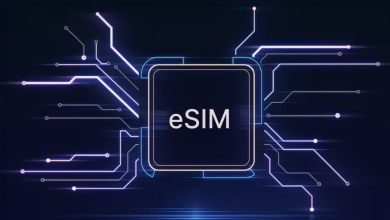Artificial intelligence has been one of the most talked-about trends in the charity sector in recent years. In fact, it’s been one of the most significant talking points across the entire modern-day business industry because it’s a technology that’s literally changing the world.
However, while it’s still relatively in a new and developing state, there are plenty of ways non-profit organisations and charities can use this technology to help them with their operational, marketing, and growth efforts. That being said, there are also a lot of myths and misconceptions spreading, so you can treat this article as a bit of a primer guide to get you familiar with what you need to know.
Let’s get into it.
How Does AI Link with Non-Profits?
AI can be a bit of an off-putting topic, especially if you don’t think of yourself being a tech-savvy individual or company, but it’s perhaps not as difficult as you think it may be. After all, AI is best suited for customer-centric and initiative ways, meaning it’s easier to use AI solutions now than it ever has been before.
For example, and keeping them relevant, AI technology can help with tasks like providing you with lists of donors who are most likely to execute specified actions, such as donating by a direct mail appeal, or those who are more likely to donate to you regularly.
These projections can then be used to directly affect your fundraising and outreach tactics to help you maximise where you’re spending your effort effectively.
At a more operational level, AI eliminates the need for traditional segmentation tactics, such as grouping donors by similar attributes or giving behaviours. AI technology can do this all for you automatically or can do away with the need for them entirely.
In the latter case, AI pinpoints the people who will respond to outreach, removing the need for time-consuming data research on your part. More efficient fundraising means more time to learn about and interact with contributors.
These are just some of the basic situations in which AI technology is being used within NGO movements. Some of the most specific uses include;
- Creating mailing lists for petitions. AI can predict who is most likely to donate to your plea, allowing you to save money on printing and increase conversions.
- Keeping track of your monthly donation programme. AI algorithms may also tell you who is most likely to increase their donation, join, or leave your programme.
- Identify chances for mid-level and big gifts. To provide your development team with an extra level of clarity, compare AI predictions to your own prospect lists.
The key notion is that AI can help you predict how donors will act, allowing you to plan proactive rather than reactive outreach.
In short, the benefits are clear. AI helps you take control of your efforts and where you’re spending your limited resources, allowing you to reach goals and hit targets effectively and in an optimised fashion. As an NGO, this is critical because your resources are already limited, as are how you operate your business.
How to Get Started with AI Within Your NGO
You’ll need two items to get started with AI for your nonprofit.
The first is artificial intelligence software.
There are plenty of solutions out there, with new ones being added all the time, so make sure you’re doing your research, seeing what’s out there, and then figuring out which is best for your NGO, based on your goals and resources.
Ideally, you’ll want to invest in AI software that can analyse your previous donation data regularly. Also, technology that uses deep data patterns to train (and constantly update) a predictive algorithm that generates forecasts for certain propensities, such as the likelihood of responding to a letter appeal. There’s no need for extensive manual analysis, and then all your team has to do is sort your donors by the AI’s predictive scores.
Secondly, you’ll need a solid data infrastructure: Before you can start making predictions, you’ll need data for the AI programme to examine. To keep your data organised and relevant, you’ll need a database or CRM platform, as well as appropriate data management methods.
Ideally, your AI software should interact with your CRM, allowing for easy data flow between the two. Leading providers can frequently link with systems like Salesforce and Blackbaud out of the box, but if bespoke integrations are required, you may need to work with a nonprofit expert.
Conclusion
There’s no doubt that the latest frontier of fundraising is artificial intelligence (AI), which allows NGOs to focus on engaging donors rather than organising campaigns using outmoded manual methods. Explore your alternatives and continue your investigation to learn more if AI sounds like the right move for your nonprofit.




